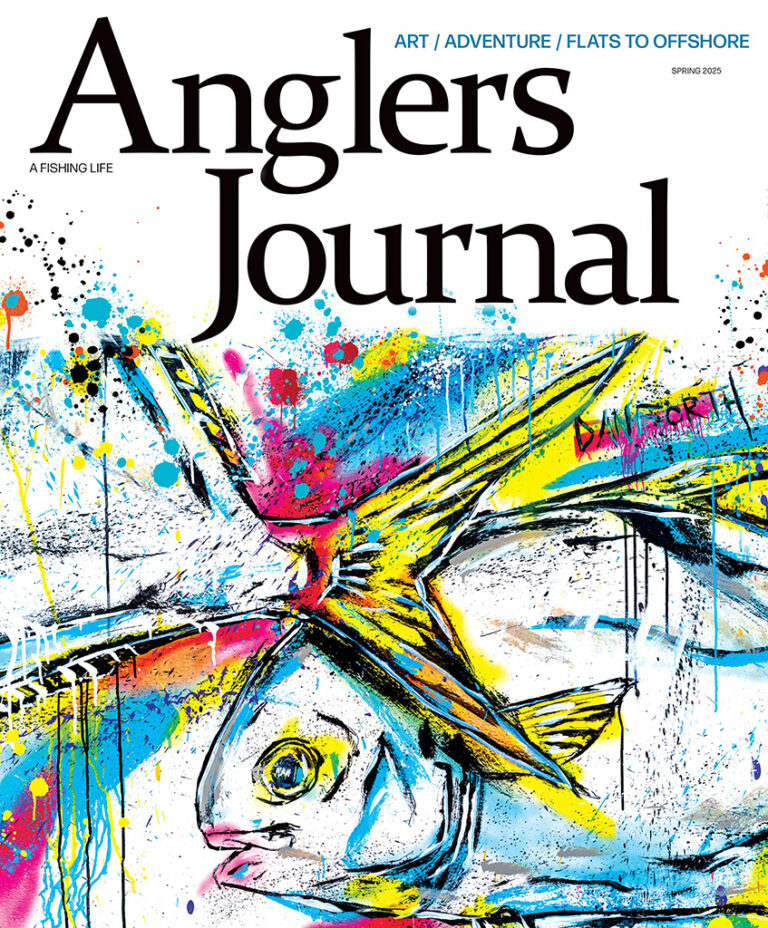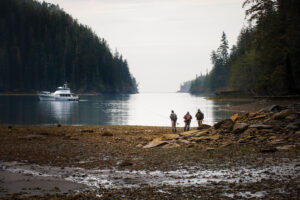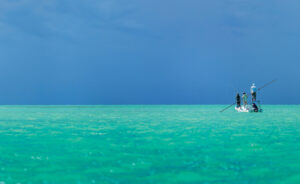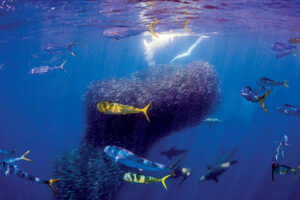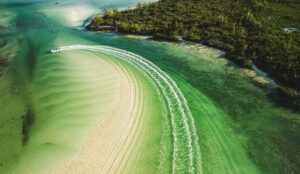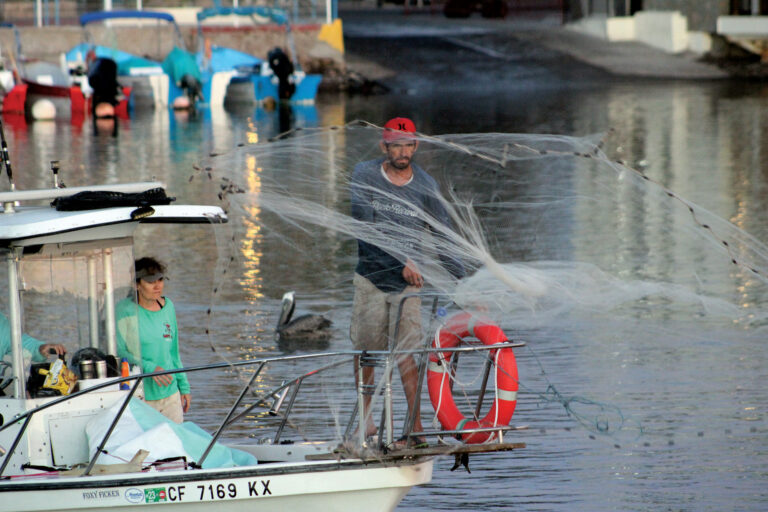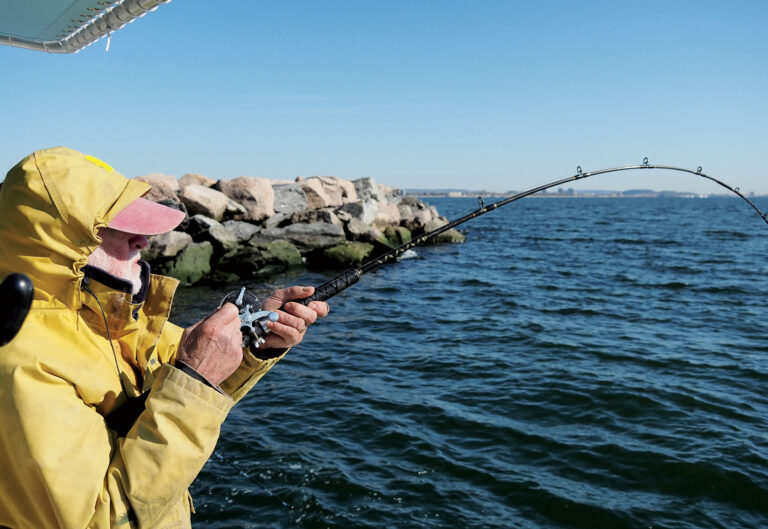
Strapped inside the noisy, four-seater cabin of a twin-engine Piper, I felt a sudden change in pressure in my ears, confirming our descent. Glancing out the window, I took in my first view of a barren, nondescript lump of brown rock amidst an expanse of indigo blue that stretched to the horizon. After many months of planning, we were about to fish the unsullied waters surrounding Robinson Crusoe Island.
Many anglers believe there are no “new” fisheries left to discover. I’ve fallen into that lot myself, yet at 64, I’m fortunate to have fished and traveled extensively. Then I heard of a destination neither I nor any of my traveling fishing friends were aware of — a South Pacific location reputed for its wide range of game fish, most of which I was unfamiliar with and had yet to catch.
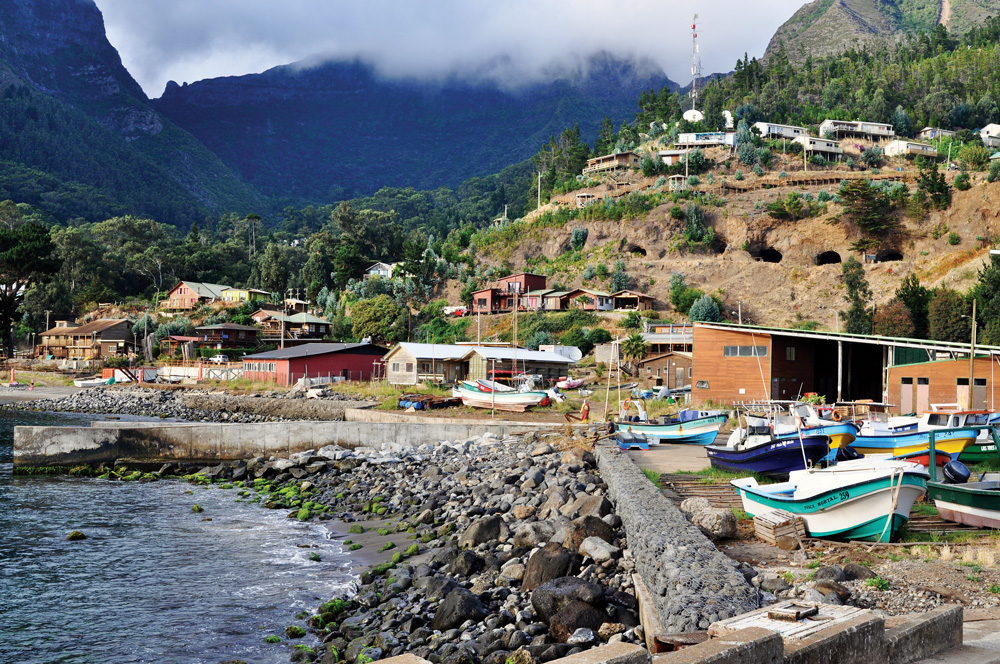
Robinson Crusoe is the largest of three volcanic islands in the remote Juan Fernandez Archipelago 400 miles off Chile. The islands are within the largest marine reserve in the Americas, where commercial net fishing is banned and sport fishing only recently became allowed. When I stumbled upon a fishing video shot at Robinson Crusoe, I decided I had to go.
The main target here is the yellowtail kingfish, similar to what anglers on the U.S. West Coast call yellowtail and the Japanese call hamachi. It looks and fights much like an amberjack. The yellowtail kingfish was new to me. My friends who had caught these fish in New Zealand, Australia, South Africa and California confirmed that, pound-for-pound, they are strong fighters and willingly attack a range of lures.

The video I found also showed locals catching a toothsome critter they called “barracuda,” as evil-looking a fish as ever there was. Other species include trevally, snapper, grouper and Pacific halibut. In deeper waters, mako sharks, striped marlin and southern bluefin tuna thrive.

GETTING TO ROBINSON CRUSOE ISLAND
You must travel through Santiago, Chile, to visit Robinson Crusoe. This was my first trip to the Chilean capital, and with its backdrop of snow-peaked Andes, the city made a positive impression upon me. Santiago is the cleanest, most welcoming city I have experienced in Central America or South America. We found excellent bars, cafes and restaurants, all serving fine food at reasonable prices along with delectable Chilean wines.
Santiago-based outfitter Andes Fly Cast organized our trip and handled our payments to the lodge, hotel reservations and all transfers. Most important, they booked the flights from Santiago to Robinson Crusoe and maintained contact with the airline to confirm departure times. This is crucial. Flight times fluctuate around prevailing weather conditions and can change at short notice.

We stayed at La Robinson Oceanic. Accommodations were excellent, meals were exceptional, and everything else was of a very high standard. Considering the remoteness of these islands, the level of hospitality was impressive. The climate is beautiful, with warm to hot days and cool nights, and we never encountered biting bugs. The fishing season runs from October through April. Like many fishing locales, the big consideration was wind, which can limit the fishable areas. However, finding somewhere to fish in comfort and safety was not a problem, especially as some of the very best spots are right up against the shoreline beneath high cliffs.
The most popular fishing technique is casting lures, typically surface poppers, stick baits and metal and soft-plastic lures, along with slow-pitch and high-speed jigging. Fly-fishing opportunities, especially for record-hunters, is wide open. As this is a rock-strewn island, you’ll want to bring top-quality tackle, such as Shimano Stella and Ocea casting and jigging outfits. If you don’t bring your own gear, the lodge can accommodate, but anglers are responsible for any losses or breakages.
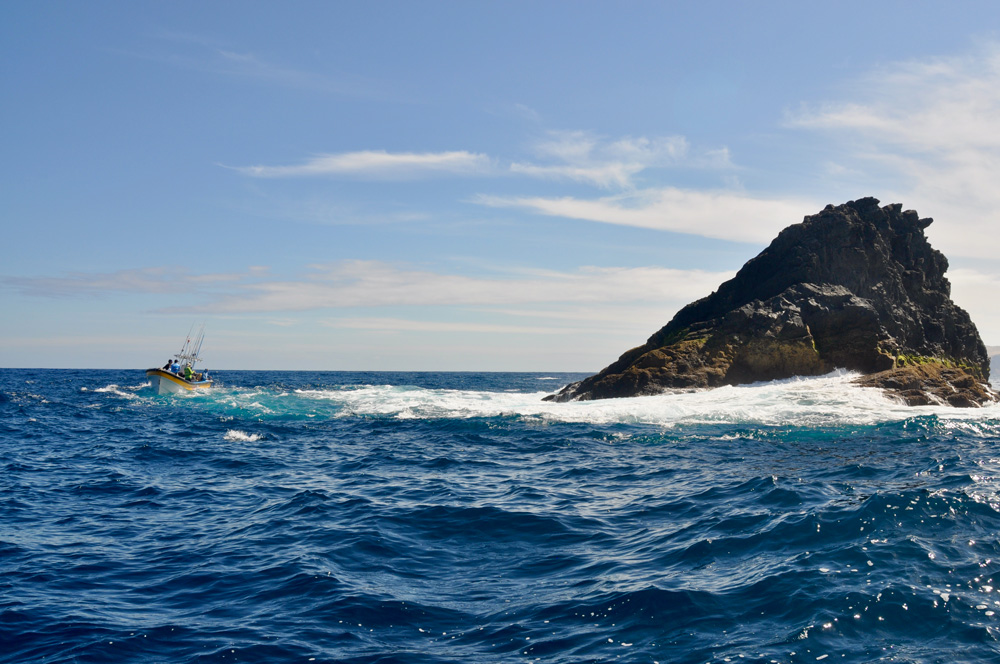
NEWFOUND FISHING OFF CHILE
From the airport, we drove down a steep and roughly hewn track to a jetty at Bahia El Padre, the center of a long-extinct volcano. We then boarded a water taxi for the one-hour transfer around the northern coast of Robinson Crusoe to San Juan Bautista, the capital, which straddles the waterfront. Home to a population of 900, it would be our home, too, for the duration of our trip.
The following morning, we assembled at the town pier, a simple yet functional structure that serves as the beating heart of this isolated community. Life here revolves around fish and fishing. We boarded two pangas and made our way out to open water. We had barely left the shelter of the bay when Rudy Aravena, the 47-year-old lodge owner and our captain, stopped the boat. The engine had barely achieved normal running temperature. Sensing a problem, I glanced at Aravena and shrugged my shoulders. Aravena smiled (he smiles a lot) and said we had arrived at our first fishing spot. I glanced at the fishfinder, which confirmed a depth of around 200 feet with dense shoals of fish throughout the water column.

Full of anticipation, we each dropped a jig down, watching as it fluttered and flicked through the clear, blue water. We started catching fish almost immediately. We reeled up plenty of small yellowtail kingfish in the 5- to 10-pound range, silver trevally and the first of those fearsome-looking fish, which I later learned is a species of snake mackerel (Thyrsites atun). Wide-ranging throughout the Southern oceans, these are known as snoek in South Africa and barracouta within Australasia. The fish would attack a jig with a single savage lunge, and when a hook found a safe hold in the corner of its jaw, away from the teeth, they’re rod bending dives more than compensated for a few lost lures to their sharp teeth.
My first fish of the trip was a Pacific halibut, which inhaled a weighted swim shad I slowly worked up through the water. Compared with halibut I have caught in Norway and Canada, it was a modest specimen at around 40 pounds, but Aravena was delighted. “It will make a very fine addition to lunch,” he said.

We fished several spots along the island’s northern coast throughout the morning. Just after 1 o’clock, we rendezvoused with a second fishing boat in a sheltered bay. We moored side-by-side, tied off to a lobster trap buoy, and Aravena set about preparing the first of six incredible lunches we would enjoy that week. The menu changed each day depending on what we managed to catch. The crew whipped up a delicate batter to make deep-fried halibut goujons as a starter. The food was far and above anything I have ever experienced aboard an open panga.
While waiting for lunch, we chatted with the other boat, closely watched by hordes of sea lions. We amused ourselves with a fly or light spinning rod, harassing the multitudes of fish that swarmed beneath us. I embraced the remoteness — I felt so far away from the rest of the world.
After lunch, we went jigging amidst a foaming surge of white water, the result of a hefty ground swell pushing up against a clutch of three isolated rocks located midway on the south coast of Islotes Los Chamelos. The silver trevally and small yellowtail kingfish kept us busy on various soft plastics and jigs when what clearly was a far more substantial fish hit the jig Martin Salter was working. As he tried to gain line and keep the fish away from the jagged reef, his rod was reshaped into an alarming arc. Aravena slowly backed the boat away from the rocks, and we slid into water deep enough for Salter to settle down and fight what turned out to be an impressive 50-pound yellowtail, its large caudal fin and dorsal fins gilded in gold.

The next day, we fished surface poppers near Puerto Ingles, a stark, barren stretch of coast that offered little in the way of greenery. Here, visitors can tour the cave that once served as home to Alexander Selkirk, a Scottish privateer and Royal Navy officer, who spent four years and four months as a castaway on the island from 1704 to 1709 after being marooned, at his own request, by his captain. Selkirk believed the Cinque Ports, the ship he was serving on, was unseaworthy. His concerns were justified. Cinque Ports foundered near Malepo Island, off what is now Colombia. Selkirk was the inspiration for Daniel Defoe’s classic novel Robinson Crusoe.
I began day two standing on the bow of the panga as it gently rode the ever-present swell. Full of anticipation, I made my first cast, launching a cup-faced popper toward the surf line fringing the base of the high cliffs. As I started to work the lure back to the boat, the sea behind the chugging popper turned from blue to yellow as a wave of at least 50 yellowtail kingfish raced in a suicidal dash to be the first to grab the popper. It was a sight I’ll never forget, but to my amazement, not a single fish ate the lure. At the last moment, they faded away.
The same thing occurred on subsequent casts for our group of four anglers, until a fish of 40 to 50 pounds finally grabbed a lure and headed for the ragged rocks. We all caught plenty of small to medium-sized fish, but no more large specimens.
Late in the afternoon, we returned to Islotes Los Chamelos. We started fishing a short distance from the white water that was so productive the previous day and immediately started to raise fish. Unlike the finicky fish we encountered in the morning, these fish were hungry. Once again, vast schools of fish turned the water yellow as they chased down our lures, only this time each of us hooked fish in the 30- to 50-pound range. This was exactly the sort of fishing that inspired me to visit this magical place, and we still had four days left to fish.

PURSUING GIANT FISH
The biggest kingfish of our trip came first thing in the morning on day five. Estimated somewhere north of 60 pounds and as fine a fish as it most certainly was, it faded into insignificance compared with the behemoth yellowtail that chased down my popper a few hours later.
We had been fishing close to shore off the northernmost tip of Isle Santa Clara, Robinson Crusoe’s smaller, uninhabited neighbor to the west. We drifted through a narrow channel separating the island from a jagged rock outcropping, a turbulent stretch of water that made standing in the boat difficult. These were the conditions that invariably held the biggest kingfish, which like predators everywhere use churned-up water to their advantage when hunting baitfish.
That enormous fish appeared along with a half-dozen smaller kingfish. The crew immediately started screeching in excitement. The fish chased my lure all the way to the boat, to the point where another turn of the reel handle would have brought the lure to the rod tip. Despite the chase, I never hooked the beast, and considering where we were fishing, the chances of landing it would have been minimal. While we may never know its true size, Aravena confidently called it 100 pounds, possibly 120.

The IGFA lists two records for yellowtail: Californian yellowtail and southern yellowtail. The all-tackle record for each is 109 pounds, 2 ounces and 114 pounds, 10 ounces, respectively. Both listings are labeled Seriola lalandi, the same species and the very fish we were targeting.
Yellowtail in excess of 50 pounds are abundant around Robinson Crusoe Island. We were told yellowtail kingfish up to 110 pounds have been caught right off the end of the town jetty.
As the fishing came to a close, we once again boarded the boat to ferry us back to the airstrip for our return flight to Santiago. Each of us is planning another trip, which speaks volumes about the impression those six fish-hauling days in saltwater Nirvana made upon us.
For more information, visit andesflycast.com.

